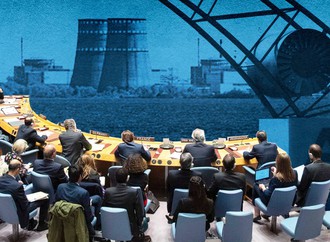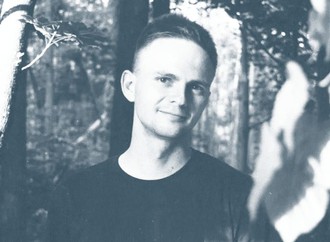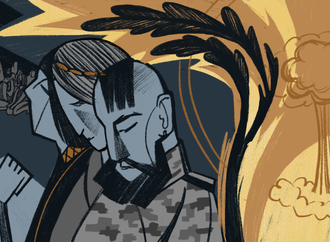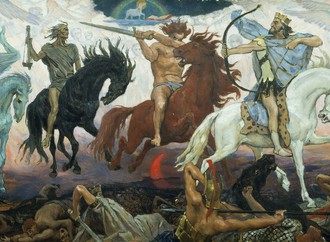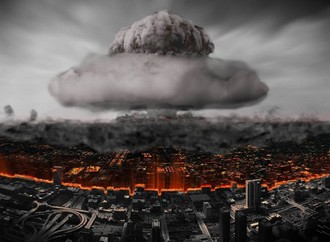Hugh Gusterson is a British-American anthropologist and a professor at the University of British Columbia. Gusterson started his career with a two-year study of the personnel of the US nuclear arms laboratory in the mid-nineties. Since this work, he has continued writing for and about atomic scientists. Besides, Gusterson investigates contradictory social roles and objects existing at the intersections of technology, politics, and scientific knowledge: drones, their operators, lie detectors, and institutions that rely on them. Commons contacted Professor Gusterson to discuss all of this as well as – for obvious reasons – nuclear weapons, nuclear doctrines, and Nuclear Winters.
I first wrote to you back at the end of January and spent a lot of time thinking how to begin this interview afterwards. February 24th narrowed everything down to just one question. So, what is the United States obliged to do if one of their allied countries is attacked with nuclear weapons? Ukraine, for instance.
It is clear that in the current war the US supports Ukraine and is providing arms to Ukraine, but there are different categories of alliance that entail different obligations. Say, if Russia were to attack Estonia with nuclear weapons they would be completely different then if Russia were to attack Ukraine. According to article five of the NATO alliance treaty, an attack on any NATO country is seen as an attack on all NATO countries. It’s always been assumed that any nuclear attack on any member of NATO could bring a NATO or an American nuclear response.
But Ukraine is not a member of NATO. There wouldn’t be a legal obligation to respond with a nuclear attack. I’d be extremely surprised if decision-makers in Washington would go nuclear. Even if Ukraine were attacked with atomic weapons.
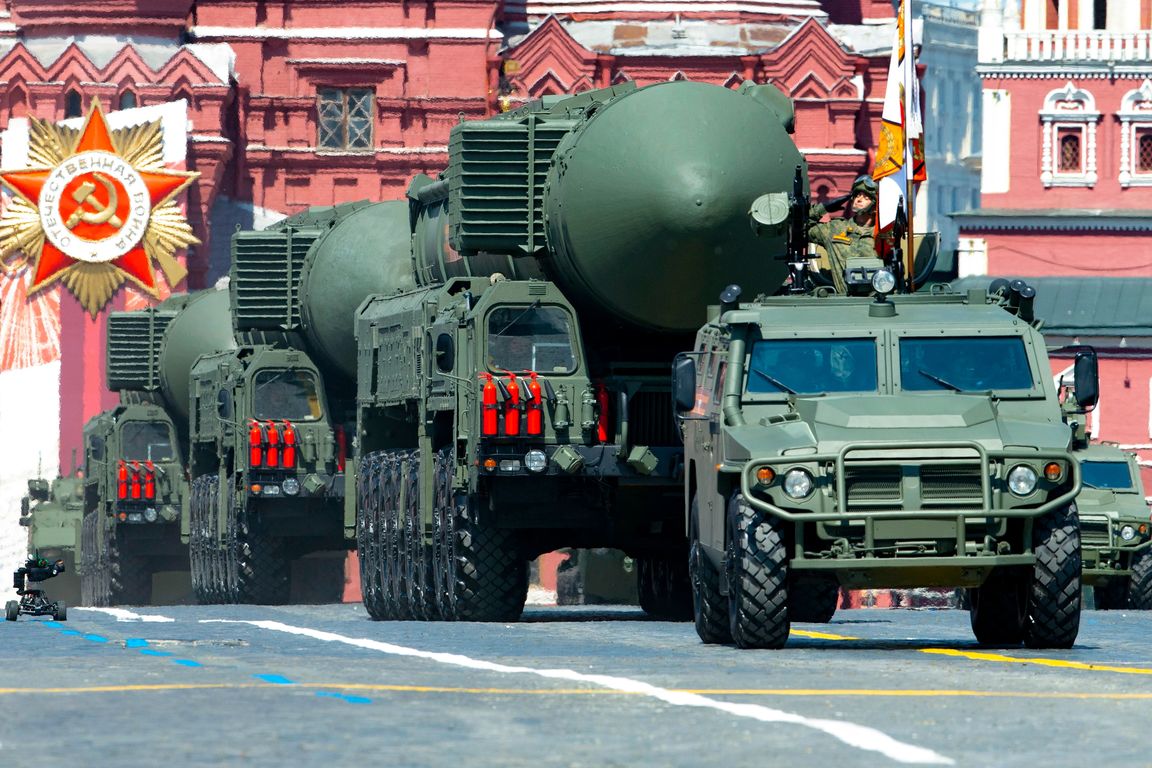
Demonstration of nuclear forces by Russia during the parade in Moscow / AP images
On the other hand, even if Putin is ready to use the atomic bomb and will issue such an order there is a lot of talk about the possibility that his own subordinates might disobey. Is there a similar likelihood in the United States?
There are a number of statements that you made, each should be addressed separately.
In terms of the question whether people would obey an order, a legitimate order from a leader of the country, to use nuclear weapons… There have been at least two cases that we know of in US history where preemptively very senior people have spread the word in the US military to be prepared to disobey an order to use nuclear weapons.
In the very last days of the Nixon presidency, he was drinking very heavily, was very depressed. Knew his presidency was broken and he was probably about to resign. And people around him in the White House became nervous about his mental health. We know that James Schlesinger, who was the secretary of defense at the time, put out an order that if any order to use nuclear weapons would have been received, it was to be re-routed to him. He would decide whether it was a legitimate order or not. Now, I think what Schlesinger did there was completely illegal and unconstitutional. It’s also a very good thing that he did it, right?
Yeah.
We also know that in the final days of the Trump administration, General [Mark] Milley, the chair of the joint chiefs of staff, issued a similar order concerning Trump. So there have been at least two occasions when civilian military leaders or military military leaders in the US have worried about the mental stability of the US president and have taken pre-emptive measures to make sure they couldn’t use nuclear weapons.
I will also say that there have been some occasions where the shoe has been on the other foot. The conditions have been met for the USSR to use nuclear weapons. And in those circumstances a single military officer has stepped in and prevented it from happening. Now, these are not circumstances when an order was given, but they are circumstances where conditions were met.
One was in 1983, I believe. A new Soviet alert system gave a false alarm. It looked to the central command as if the USSR was under nuclear attack from the Reagan administration. A single Russian nuclear officer [lieutenant colonel Stanislav Petrov] had to make the decision. He decided it would be implausible that the US was attacking the Soviets and he gave an order to wait and see if any bombs exploded on Russia. Now, this order was a departure from protocol. Although he saved millions of lives, he was disciplined for not following regulations. [Smiles.] But he did the right thing. It was, in fact, a false alarm.
We also know of an instance during the Cuban Missile Crisis when a nuclear armed Soviet submarine off the coast of Cuba was being harassed by American surface ships. They were dropping depth charges to try and force it to surface. And the leader of the submarine gave the order to use a nuclear-tipped missile. There was another senior official who happened to be on board of the submarine, [flotilla chief of staff Vasily] Arkhipov, who stepped in and countermanded the order.
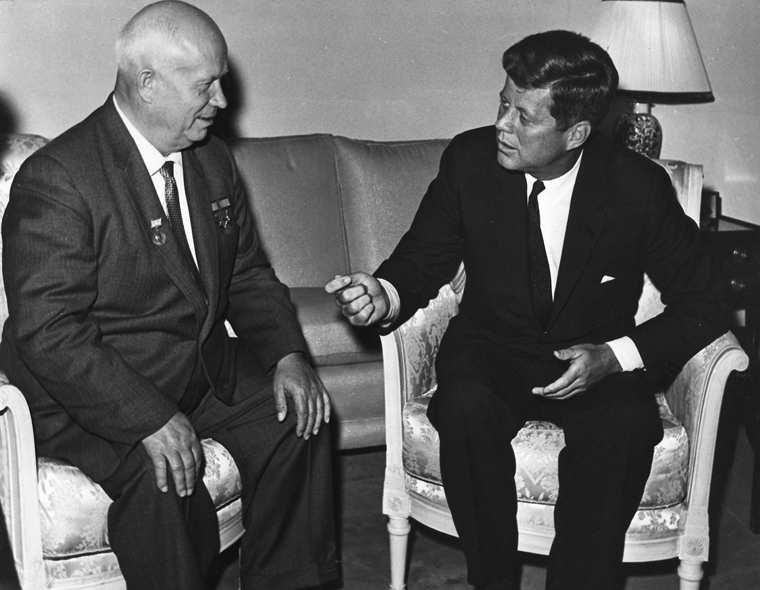
John F. Kennedy meeting with Nikita Khrushchev in Vienna. 03 June 1961 / Wikimedia
What, if anything, do we know about the Russian nuclear doctrine? It’s not public, right?
I don’t know what “public” means. I keep reading in the American media that the doctrine exists. People at think-tanks who think about the nuclear weapons in the US for their living constantly refer to the doctrine. That makes it public to me.
Back in the nineteen-eighties the USSR used to have a doctrine of no first use. That they would never be the first to use nuclear weapons. That, according to them, nuclear weapons existed only to deter other nuclear weapons. But Russia scrapped that commitment. They publicly said they could be the first to introduce nuclear weapons into a conflict.
They have a doctrine that’s called “escalate to de-escalate,” you can judge for yourself how plausible it is. Let’s say a Russian army will be cornered in Ukraine. They are about to take very-very high casualties and to be humiliated in a way that is not acceptable. Then a commander might give an order to use a tactical nuclear weapon to administer psychological shock. So the theory is that the other side would say, “Oh my God! They are ready to use nuclear weapons! We should back off.” Not, “Oh, they are using nuclear weapons, we should respond with nuclear weapons.” Which is also quite plausible.
It might partly depend on what target the nuclear weapon was used against. Were the Russians to drop a nuclear weapon on tens of thousands of Ukrainian soldiers, giving them no chance of survival and inflicting a horrible death on them, the psychological temptation to respond with a nuclear weapon might be greater than if, say, they pointed a nuclear weapon in the opposite direction at more or less empty land and did a sort of demonstration nuclear explosion as opposed to one that killed a large number of people. That is what escalate to de-escalate means.
And the Americans have a similar sort of doctrine. The idea is that the other side will say, “Oh, we didn’t realize how seriously you took this. Now we realize, we’ll back up and we’ll treat you with more respect.”
Let’s return to the scenario of a full scale nuclear war between nuclear powers. Throughout the Cold War both sides were thinking in terms of the Mutually Assured Destruction (MAD)[1] framework. You aptly describe the paradox in your book: nuclear weapons existed in order to never be used. What is the current situation? MAD still remains the commonly accepted model?
Yes, MAD is still the dominant framework. Biden actually looks like a classic Cold War President in this sense. I mean, he has been quite cautious in Ukraine. He’s making sure US and Russian troops do not come face to face. In that regard he is behaving like George H. W. Bush the elder, or Jimmy Carter, or Ronald Reagan. These were the US presidents who were always happy to fight Russians through proxies – in Nicaragua, El Salvador, Korea – but avoided the situation where Russian and American troops came directly in contact with each other. Biden is doing the same. I believe, most people who think about nuclear weapons for their living in the US agree that he is right to be showing that restraint. They don’t think American F-35s should be flying over Ukraine, enforcing a no-fly zone, they think it’s just too dangerous for the world. If you imagine that Russians shot down an F-35 and killed an American pilot, then American people would want some sort of revenge. And it becomes hard to control things.
An important part of the public’s image of an all-out nuclear war is the so-called Nuclear Winter[2]. As far as I gathered from your book, currently there are serious doubts about its probability. What is the present-day consensus among the scholars?
I think my book is quite out of date when it comes to Nuclear Winter. Most independent analysts take it very seriously. My colleague at the University of British Columbia, M. V. Ramana, is a physicist, who has done a lot of calculations on Nuclear Winter. You really don’t have to use many nuclear weapons, a hundred or so, and it would have devastating effects on the global climate. It would drive temperatures down by several degrees, would cause harvests in large parts of the world to fail. So, any use of several dozen nuclear weapons would be likely to trigger some form of Nuclear Winter. Which would mean that even if you are never near a nuclear battlefield, (let’s say nuclear weapons are only used around Russia and Ukraine, even if you are living in Japan, China, or India), you are going to be very badly affected.
You have already mentioned tactical and strategic nuclear weapons. Could you expand on the distinction? Not all countries recognize it, if I am not mistaken. Only Americans and Russians?
The British recognize it. I thought the French did, but maybe I am wrong.
First of all, tactical nuclear weapons usually do not have as long a range as strategic nuclear weapons. It is something that’s fired out of a cannon or dropped by a plane, or something like that. Usually used a hundred or so miles away from its point of origin. It tends to have a pretty low yield. Smaller than the Hiroshima bomb. Now, I should emphasize: the Hiroshima bomb now is seen as a very small nuclear weapon. Its power was about thirteen kilotons. That’s thirteen thousand tons of TNT.
Some tactical nuclear weapons have three, four, five kilotons. You could imagine using them to take out a target like a bridge or a dam. It would kill a fair number of people and do a lot of damage symbolically. Crossing the nuclear threshold is a huge deal. But it’s very different from using a strategic nuclear weapon.
I’ll give you an example of the American one. The Trident II submarine-launched nuclear weapon has a yield of three hundred and fifty kilotons. Now, remember, I said the yield of the Hiroshima bomb was thirteen kilotons? Three hundred and fifty is hu-u-uge compared to that. You can launch it from a submarine anywhere in the world and it will reach its target twenty-twenty-five minutes later. It goes up into space, comes back down through the atmosphere at six times the speed of sound. Can land on a target, allegedly, with an accuracy of within a hundred feet. Very destructive, very accurate.
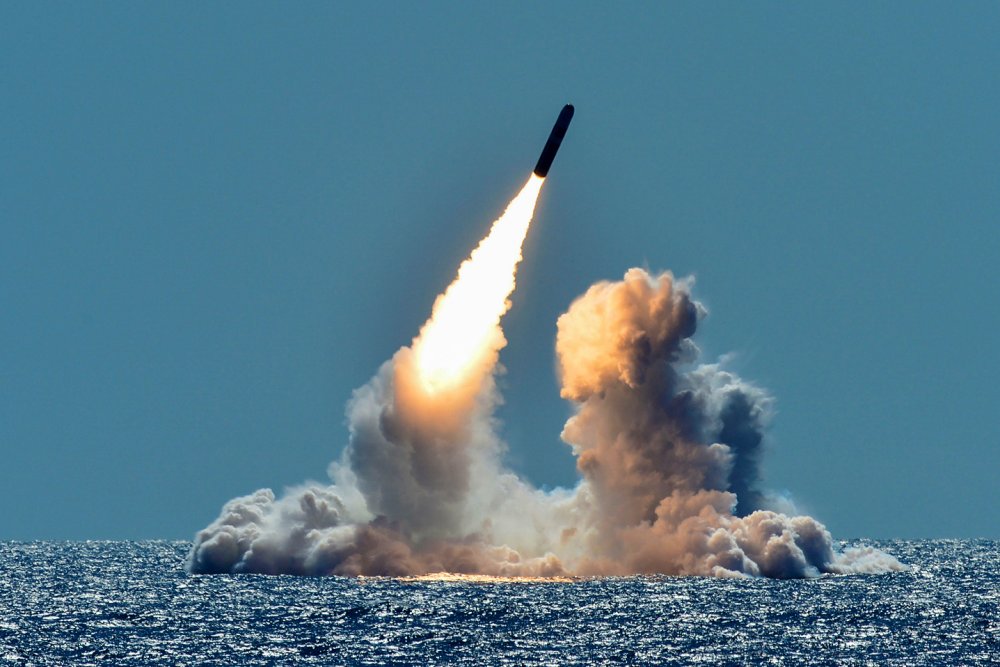 Launch of the American three-stage ballistic missile UGM-133A Trident II (D5) from the nuclear submarine / Wikipedia
Launch of the American three-stage ballistic missile UGM-133A Trident II (D5) from the nuclear submarine / Wikipedia
Some analysts are worried that tactical nuclear weapons are dangerous precisely because they are very small. They blur the distinction between the regular weapon and the nuclear weapon. And they are more tempting to use precisely because they are less impactful. The fear is that once you cross the nuclear threshold, you just keep climbing a ladder until you end up using something like Trident II.
Another question, this time asking as an anthropologist. I, for instance, understand how to work with people from New Religious Movements. Establishing rapport with them is generally not very difficult, because, on some level, they want to tell their story, introduce you to the community and their beliefs. Want to convert you. You, on the other hand, dedicated almost the entirety of your career to groups that are not merely sheltered from the outside world, but also elite. Livermore employees[3], drone pilots, politicians… I wanted to ask, just on the level of craft, how do you play them? How do you make them talk? Because generally these are not the kinds of people who readily tell their secrets. Especially to an anthropologist, especially to one quite critical towards the military-industrial complex.
Not sure I would use the word “play.” Makes it sound as if I manipulate them.
I think people know when someone is really interested, and people respond to someone who is interested in them. If you lead a kind of life nuclear weapons scientists lead, in some ways it’s a lonely life. If you have doubts about your work, you can’t discuss them with your co-workers because you may get a bad reputation. Maybe with your spouse? But a lot of marriages have a significant amount of distance built into them. So, along comes this person, who is truly interested in listening to you and understanding who you are and what you are about. I think, in general, people respond to someone who listens really carefully. And who’s genuinely interested in what makes a person tick. That was my experience.
I mean, there were some people who were very suspicious of me. They were never going to be anything but suspicious, and the interviews weren’t particularly good because you could tell that they were very closed.
I think if you do things like: “OK, tell me if I got this right. What I heard you say just now is this. Is that right?” It shows that you are really listening to them. You are not arguing with them, you are not saying, “I don’t understand how you could possibly believe that.” That would not be a way to interview somebody. So there was a sort of therapeutic quality to some of the interviews, I think. And some of the people told me afterwards that they feel there was this therapeutic quality. That they felt listened to and understood in the way that was very affirming for them.
What about drone operators?
You know, I wrote my book on drone operators without ever meeting a drone operator. It’s all based on third-party testimony. I wrote it very quickly – fieldwork takes a long time. It would have taken many more years if I'd done fieldwork. I don’t know that it would have been possible to do fieldwork with drone operators. The US military would have to cooperate, and I don’t think they would have. So I just gathered drone operator testimony wherever I could.
Now, I met drone operators subsequently, after the book came out. They told me that they thought I got the things pretty much right.
Alright. Now I am going to do exactly what you just said never to do in an interview. I am going to argue.
In my opinion – you shouldn’t necessarily agree – anthropology as a discipline grounds its claim to truth in fieldwork, in the method of participant observation: prolonged immersion into the lives of people we are writing about. But because of the specificity of your subjects, of the barriers of various sorts, you are very limited in using this tool. In the case of Livermore scientists, you talked to them, took part in various activities together. In the case of drone operators, you haven’t even seen each other. Does anthropology have something to say under the conditions when fieldwork is impossible or where it is severely limited? Do you ask yourself this question?
Yes, I do. A lot. In fact, I recently wrote an article reflecting on this very issue.
Let’s imagine that Livermore Lab hired me and said, we are assigning you to A Division, and you're gonna have free access to all the weapons designers in A Division. You can go to their meetings, watch them when they work in their offices, go and observe experiments with them. The book would clearly have been very-very different, it might have looked more like a classic anthropology of science book because what I would have watched was weapons scientists arguing. “Well, how do you do that? Are you sure the yield is two hundred and fifty kilotons? I think it’s only two hundred kilotons.” I might have ended up writing a book more like Bruno Latour’s books. That would be an exercise in anthropology of scientific knowledge and less an exercise in investigating people’s political ideology.
Because I was supposed to collect people’s stories and to ask people as I sat in their living rooms about why they felt OK working on nuclear weapons, it became more frontally about their ideology. I learned this technique of having people tell me stories with key moments in their career and looking very closely at the way they narrated their stories to try and squeeze bits of meaning out of them. So, the descriptions of nuclear tests, for example. I learned to look at them very carefully and figure out what nuclear tests meant to them. Now, if I’ve actually been present for the nuclear tests themselves, it would have been quite a different book, I am sure.
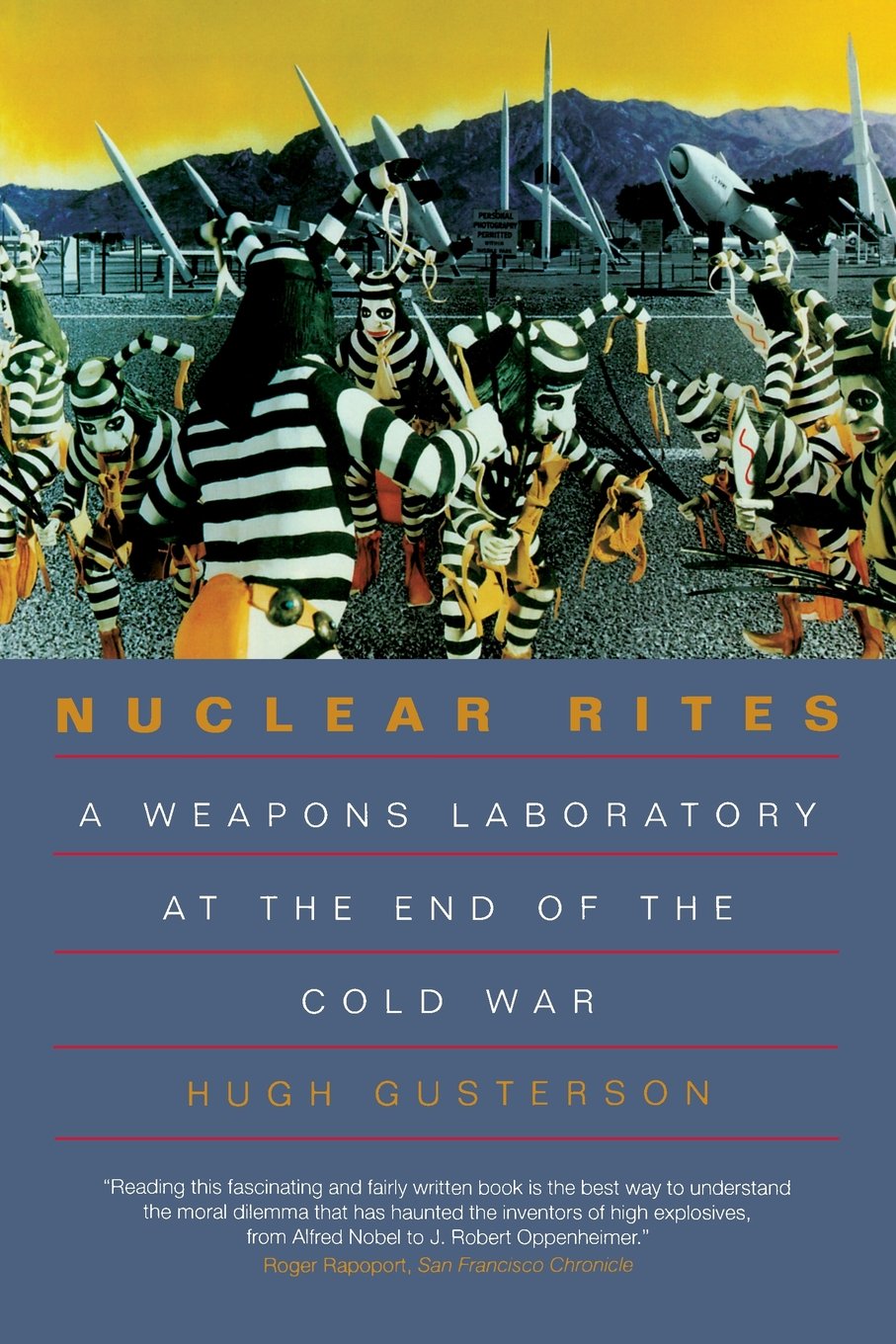
Nuclear Rites. A Weapons Laboratory at the End of the Cold War by Hugh Gusterson
I did interview some Russian nuclear weapons scientists, by the way.
Tell me more.
I went to Russia two or three times when Yeltsin was president. I wouldn’t come back now. Spent some time in Tomsk in Siberia where they have a nuclear weapons facility. I also went out to Arzamas, which is where one of their nuclear labs is. I couldn’t get access to the secret city, but I went to the city next door. And there are a lot of retired nuclear scientists in Moscow.
I particularly remember interviewing this older nuclear scientist who was present for Russia’s very first nuclear test in 1949. I asked what I think in retrospect was a bad question because it was judgmental. I said, “How did you feel when you realized you’d given Stalin a bomb?” And he said, “Oh, I felt so happy. I felt it was the first time in four years I could sleep.”
“Finally we were saved from the Americans.”
I read your chapter in “The Counter-Counterinsurgency Manual.” You are very critical about anthropologists at war. But there your discussion is framed in the context of the US military campaigns that were, to put it lightly, controversial. Is there a place for anthropologists at war that does not have this neocolonial Iraq aftertaste?
Sure. It’s hard imagining another country invading the US but certainly if a country were trying to invade America, I would feel very differently about anthropologists working with the military. And I’ve always been clear that there are some circumstances in which I would take a contract to work with the army myself.
I’ve now moved to Vancouver in Canada. But until recently I lived opposite Walter Reed Army Hospital, which is where the most badly injured US veterans from Iraq and Afghanistan were treated for traumatic brain injuries, missing limbs, things like that. If the military had asked me as an anthropologist, would you come and consult us on how to give care to these people who have been injured in the war, I wouldn’t have said, “Well, you are the military, I refuse to take money on principle.” I would certainly be willing to help out with. So, yes, it's contextual, you have to look at it in context. And I certainly wouldn’t condemn any anthropologist who was defending their country against the Russian attack right now.
Footnotes
- ^ Mutually Assured Destruction – the nuclear doctrine underlying the Soviet-American rivalry throughout the Cold War period. MAD was grounded in the approximate parity of the atomic stockpiles of both countries. Both the US and the USSR were capable of destroying the rival’s territory in response to the nuclear attack initiated by him. Hence, the decision to start such a conflict was rendered suicidal even for the side that struck first.
- ^ Global climate catastrophe caused by the full scale nuclear war and the concomitant drop of the Earth’s average temperatures.
- ^ Lawrence Livermore National Laboratory (Livermore, CA) – one of the two US research centers responsible for the development and maintenance of nuclear weapons.

